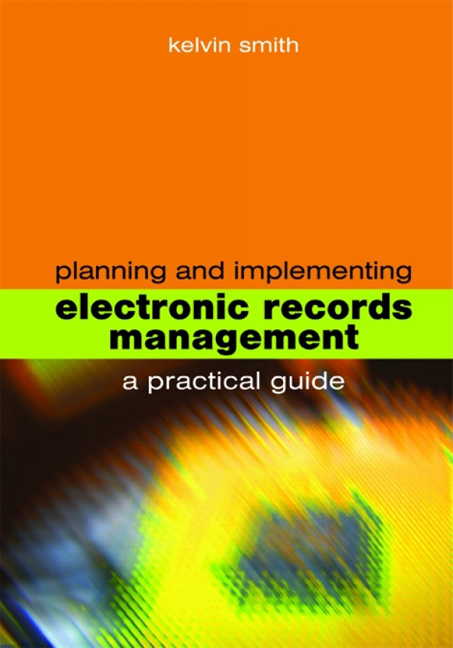2 - Context
from Part 1 - Preparation
Published online by Cambridge University Press: 08 June 2018
Summary
This chapter examines how useful and relevant it is to describe the context in which records management functions are undertaken in the organization, the legal framework in which it operates and factors (internal and external) affecting records management – all as a precursor to developing the business case for electronic records management and planning the system itself.
Definitions
We first of all need to define what we mean by various terms so that there is a clear description of the context of electronic records management and an analysis of the functional arrangements in an organization that can be easily understood. The simplest way to do that is to set out a glossary of terms. The glossary that follows tries to be comprehensive and to indicate preferred terms but it is recognized that you may well come across some terms not covered here. Working cultures in organizations – sometimes but not always split on sectoral lines – adopt different terms for a variety of undertakings. The aim here is not to deliver an analysis of such cultural differences but to steer you towards acceptable handles that will allow you to get on and do the job.
Glossary of terms
Accession
Completion of a set of intellectual and physical processes required to effect the transfer of custody and/or ownership of records from the creating or other responsible agency to the archive repository or agency for permanent retention and perpetual access.
Aggregation
Assembly of records or documents at various levels of the file plan. In the paper environment the most familiar assembly is the file; in local area networks it is typically a folder or sub-folder; in e-mail systems it is likely to be an inbox.
Appraisal
The process of distinguishing records of continuing value from those of no further value so that the latter may be eliminated.
Archival repository
A building or part of a building in which archives are preserved and made available for consultation.
Archives
Records of enduring value selected for permanent preservation.
Authenticity
An authentic record is one that can prove to be what it purports to be, to have been created or sent by the person purported to have created or sent it, and to have been created or sent at the time purported.
- Type
- Chapter
- Information
- Planning and Implementing Electronic Records ManagementA practical guide, pp. 19 - 34Publisher: FacetPrint publication year: 2007



